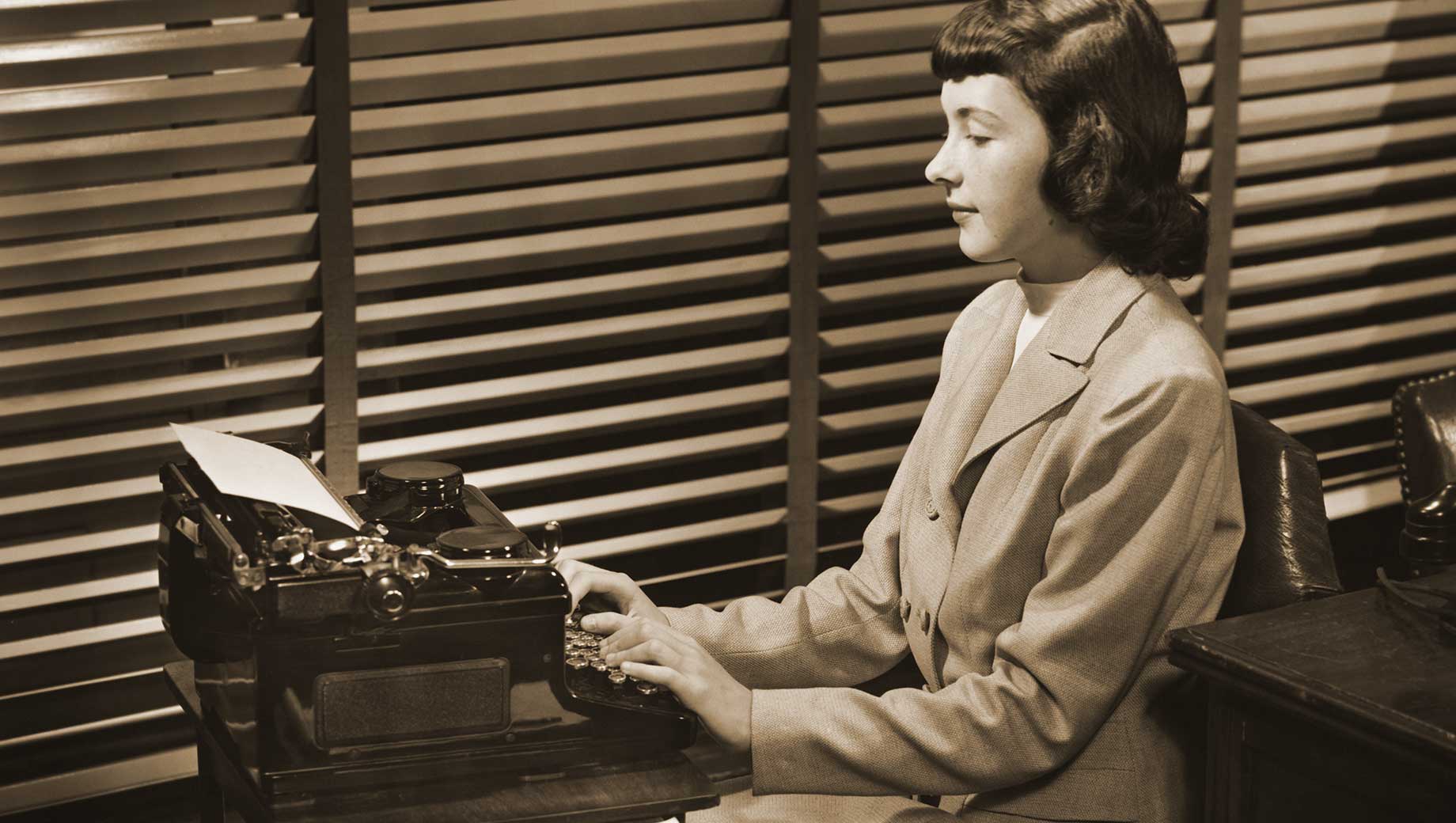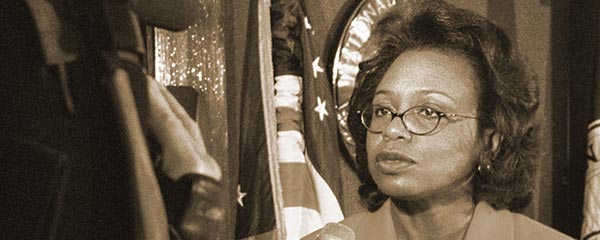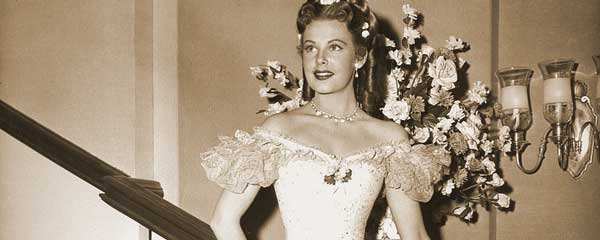WASHINGTON, D.C. -- Gallup's extensive contributions to chronicling women's history started in 1936 with several questions touching on women's right to work. One such question asked, "Do you approve of a married woman earning money in business or industry if she has a husband capable of supporting her?" The answer, with 18% approving and 72% disapproving, was a resounding "no." Three decades later, in 1969, the answer had become "yes," albeit tepid with 55% approving and 40% still disapproving.

Line graph. Americans' approval in 1936 and 1969 of a married woman earning money in business or industry if she has a husband capable of supporting her. Approval was 18% in 1936 versus 55% in 1969.
Gallup never updated that precise question again -- but in 1993, it probed the same underlying sentiment, asking, "Do you agree or disagree with this statement? 'It is generally better for society if the man is the achiever outside the home, and the woman takes care of the home and family.'" More than four in 10 Americans strongly or moderately agreed, including 45% of women and 40% of men.
| U.S. adults | Men | Women | |||||||||||||||||||||||||||||||||||||||||||||||||||||||||||||||||||||||||||||||||||||||||||||||||
|---|---|---|---|---|---|---|---|---|---|---|---|---|---|---|---|---|---|---|---|---|---|---|---|---|---|---|---|---|---|---|---|---|---|---|---|---|---|---|---|---|---|---|---|---|---|---|---|---|---|---|---|---|---|---|---|---|---|---|---|---|---|---|---|---|---|---|---|---|---|---|---|---|---|---|---|---|---|---|---|---|---|---|---|---|---|---|---|---|---|---|---|---|---|---|---|---|---|---|---|
| % | % | % | |||||||||||||||||||||||||||||||||||||||||||||||||||||||||||||||||||||||||||||||||||||||||||||||||
| Strongly agree | 26 | 22 | 29 | ||||||||||||||||||||||||||||||||||||||||||||||||||||||||||||||||||||||||||||||||||||||||||||||||
| Moderately agree | 17 | 18 | 16 | ||||||||||||||||||||||||||||||||||||||||||||||||||||||||||||||||||||||||||||||||||||||||||||||||
| Moderately disagree | 19 | 23 | 15 | ||||||||||||||||||||||||||||||||||||||||||||||||||||||||||||||||||||||||||||||||||||||||||||||||
| Strongly disagree | 37 | 36 | 38 | ||||||||||||||||||||||||||||||||||||||||||||||||||||||||||||||||||||||||||||||||||||||||||||||||
| No opinion | 1 | 1 | 2 | ||||||||||||||||||||||||||||||||||||||||||||||||||||||||||||||||||||||||||||||||||||||||||||||||
| Gallup, Aug. 23-25, 1993 | |||||||||||||||||||||||||||||||||||||||||||||||||||||||||||||||||||||||||||||||||||||||||||||||||||
A 1952 Gallup question revealed a lot about the work climate for women in that era, and perhaps one reason why some Americans thought women were only taking up space in the workforce better left for men: "What kind of job or occupation do you think offers a young woman the best chances of finding a husband?"
As Gallup has reported previously, the most popular answers Americans gave in response to this question were office jobs such as secretary or receptionist (32%) and nursing (14%). At least 5% mentioned waitressing, being an airline stewardess or selling men's clothes, while 14% sidestepped the question, giving no answer.
Yes to Jurors, No to Supreme Court Justices
The 1930s and 1940s were also a time when society -- as reflected in Gallup's polling -- was wondering if women should have a variety of important roles. These included serving as jurors, church ministers, ambassadors, members of the president's Cabinet, vice president, president and Supreme Court justices.
The responses in favor of women's access to these jobs varied by the decade and by the role being asked about, but generally showed majority opposition or no more than narrow approval. One exception was whether women should be permitted to serve as jurors, a role that 66% of Americans in 1937 supported women performing.
| Positive reaction | Negative reaction | Mixed/ No opinion |
|||||||||||||||||||||||||||||||||||||||||||||||||||||||||||||||||||||||||||||||||||||||||||||||||
|---|---|---|---|---|---|---|---|---|---|---|---|---|---|---|---|---|---|---|---|---|---|---|---|---|---|---|---|---|---|---|---|---|---|---|---|---|---|---|---|---|---|---|---|---|---|---|---|---|---|---|---|---|---|---|---|---|---|---|---|---|---|---|---|---|---|---|---|---|---|---|---|---|---|---|---|---|---|---|---|---|---|---|---|---|---|---|---|---|---|---|---|---|---|---|---|---|---|---|---|
| % | % | % | |||||||||||||||||||||||||||||||||||||||||||||||||||||||||||||||||||||||||||||||||||||||||||||||||
| 1937: Jurors | 66 | 29 | 3 | ||||||||||||||||||||||||||||||||||||||||||||||||||||||||||||||||||||||||||||||||||||||||||||||||
| 1937: President | 33 | 64 | 3 | ||||||||||||||||||||||||||||||||||||||||||||||||||||||||||||||||||||||||||||||||||||||||||||||||
| 1938: Supreme Court justice | 37 | 59 | 4 | ||||||||||||||||||||||||||||||||||||||||||||||||||||||||||||||||||||||||||||||||||||||||||||||||
| 1945: Member of president's Cabinet | 38 | 48 | 14 | ||||||||||||||||||||||||||||||||||||||||||||||||||||||||||||||||||||||||||||||||||||||||||||||||
| 1947: Minister | 43 | 47 | 10 | ||||||||||||||||||||||||||||||||||||||||||||||||||||||||||||||||||||||||||||||||||||||||||||||||
| 1947: Governors, senators, doctors, lawyers, other professions | 53 | 41 | 6 | ||||||||||||||||||||||||||||||||||||||||||||||||||||||||||||||||||||||||||||||||||||||||||||||||
| 1949: Vice president | 53 | 43 | 4 | ||||||||||||||||||||||||||||||||||||||||||||||||||||||||||||||||||||||||||||||||||||||||||||||||
| 1949: President | 48 | 48 | 4 | ||||||||||||||||||||||||||||||||||||||||||||||||||||||||||||||||||||||||||||||||||||||||||||||||
| 1949: U.S. ambassador | 54 | 34 | 12 | ||||||||||||||||||||||||||||||||||||||||||||||||||||||||||||||||||||||||||||||||||||||||||||||||
| Full question wordings: 1937: Are you in favor of permitting women to serve as jurors in this state? 1937: Would you vote for a woman for president if she were qualified in every other respect? 1938: Would you favor the appointment of a woman lawyer to be a judge on the United States Supreme Court? 1945: Would you approve or disapprove of having a capable woman in the president's Cabinet? 1947: Do you think a woman would make as good a minister as a man? 1947: What is your feeling about having more women serve as governors, senators, doctors, lawyers and in other professions? 1949: Would you vote for a woman for vice president of the United States if she seemed qualified for the job? 1949: If your party nominated a generally well-qualified person for president who happened to be a woman, would you vote for that person? 1949: Do you approve or disapprove of having a woman as ambassador or minister? |
|||||||||||||||||||||||||||||||||||||||||||||||||||||||||||||||||||||||||||||||||||||||||||||||||||
| Gallup | |||||||||||||||||||||||||||||||||||||||||||||||||||||||||||||||||||||||||||||||||||||||||||||||||||
One of the 1947 questions asked respondents what they thought about "having more women serve as governors, senators, doctors, lawyers and in other professions." Notably, the 53% who approved didn't reflect a whole-hearted endorsement. As George Gallup pointed out at the time, "More women than men would like to see women move out of the kitchen to become lawyers, doctors and politicians. Those who gave qualified approval [7% out of the 53% in favor] think more use should be made of feminine talents in the professions but that women shouldn't meddle in politics."
That hesitancy about women in politics was echoed in Americans' limited willingness during the 1930s and 1940s to vote for a female presidential candidate. Gallup first asked Americans in 1937 whether they would vote for a woman if their party "nominated a generally well-qualified person for president who happened to be a woman." At that time, 33% were willing, and it rose only 15 percentage points to 48% by 1949. From there, it was a long, slow march to crossing the 90% threshold, finally reached in 1999. Willingness inched up to 96% in 2011, but has since slipped back to 93%.

Line graph. Trend from 1937-2020 in percentage of Americans' willingness to vote for a female president, rising from 33% in 1937 and 1945 to a majority for the first time in 1955 (52%) to over 90% consistently since 2011.
During and after World War II, Gallup probed Americans' support for women holding a variety of positions in the war effort and the military in general. Those results will be reviewed in a future Gallup report.
In fact, Gallup has asked hundreds of questions about women in society over its near-century of polling -- not just in terms of the workplace but regarding relationships, domestic life and gender roles generally. As fascinating as the answers are, the questions offer a direct window into how society talked and thought about women in prior eras, and Gallup looks forward to sharing these questions and answers in future installments of the Gallup Vault.
Read more insights from the Gallup Vault.




